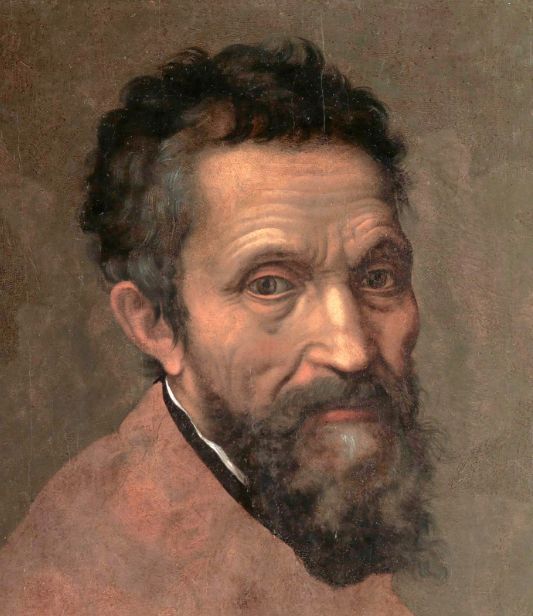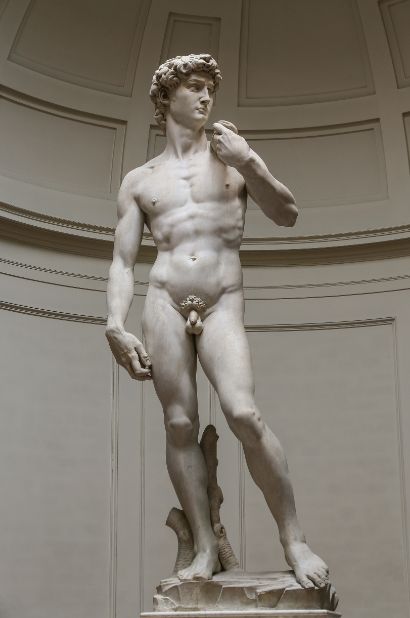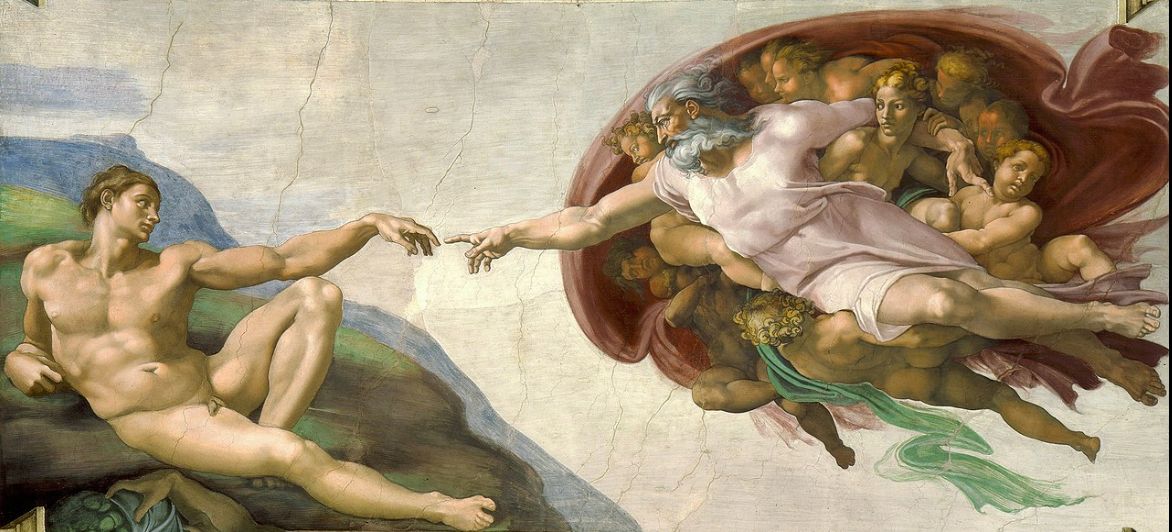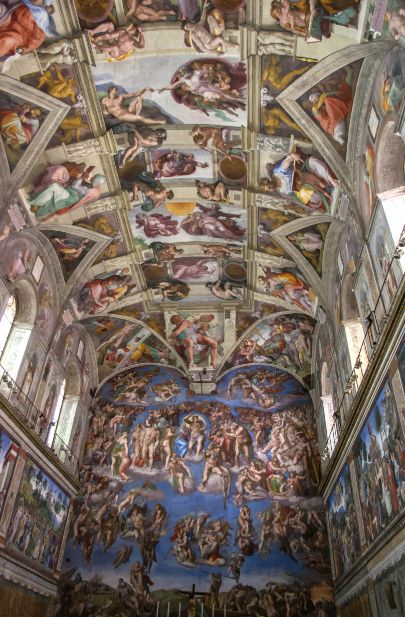During the pinnacle of the Renaissance, Michelangelo's work on the Sistine Chapel ceiling became a legendary chapter in art history. This Florentine genius, with his extraordinary talent and unique personality, created numerous timeless masterpieces. His art is not just a showcase of skill but a profound expression of his inner solitude and passion.

Michelangelo was born into a fallen noble family in Florence. The poverty of his family and his intense passion for art made him stand out early on, displaying exceptional talent and a relentless pursuit of artistic perfection. He considered himself different from other artists, even feeling ashamed of his apprentice status. In 1548, he told his nephew, "I am not in the league of painters or sculptors who keep shops". This high self-regard pushed him to continually surpass himself, creating works of eternal brilliance.
Among his early works, Michelangelo's sculpture of David is undoubtedly a highlight of his artistic career. Completed in 1504 after three years of effort, this colossal statue depicts a righteous and fearless victor with a robust physique and an unwavering gaze, symbolizing the new Republic of Florence. Michelangelo's mastery of human anatomy brought David to life, showcasing his exceptional artistry and meticulous attention to detail. Unlike earlier representations, David is not shown trampling Goliath's head but as a fearless victor. Florentines viewed this statue as a symbol of the new republic that expelled the Medici family. Whether Michelangelo intended this symbolism remains uncertain. Originally intended for the cathedral’s door, this statue became one of the largest nude sculptures ever, boldly showcasing Michelangelo’s non-classical depiction of power.

What truly cemented Michelangelo's place in history was his work on the Sistine Chapel ceiling. In 1508, Pope Julius II commissioned him to paint the ceiling, presenting Michelangelo with an unprecedented challenge. Despite initial reluctance, he eventually poured all his energy and talent into this monumental project, completing it almost entirely on his own over four years. Through this process, Michelangelo demonstrated his extraordinary prowess in painting, transforming the ceiling into a complex and magnificent visual feast.
The central part of the ceiling features scenes from Genesis, with the most famous being The Creation of Adam. This painting captures the dramatic moment when God gives life to Adam through a touch of their fingers, filled with dynamic energy and showcasing Michelangelo's profound understanding of human anatomy and exceptional technique. In this vast composition, Michelangelo uniquely transformed religious narratives into art imbued with strong personal style. Michelangelo envisioned the ceiling as an extension of the church’s architecture, treating the curved surface with grand arches. He separated the triangular sections above the windows and the corner recesses, painting the intermediate arches as thrones with a cornice marking the imaginary wall’s top, flanked by "horizontal" stone ribs spanning the center. This imaginative structure provided three distinct painting areas, each with corresponding content.

On the lowest level, the arches above the actual walls and around the upper windows depict the ancestors of Christ. The second tier’s thrones bear colossal images of prophets and classical sibyls, all prophesying the coming of Christ. The uppermost paintings, using their own perspective rules, depict the earliest periods of world history before Moses received the Ten Commandments.

Michelangelo’s artistic style is dramatic and emotionally charged, expressing his deep inner solitude and relentless pursuit of self. Throughout his work on the Sistine Chapel, he worked almost entirely alone, reflecting his genius and diligence and showcasing his nearly pathological pride and arrogance. Michelangelo, who was unsociable and reclusive, used his solitude to focus intensely on his creations, undistracted by external influences. His genius was not just technical; it lay in his unique understanding and profound insight into art. He believed that art was not merely a display of skill but an expression of the soul and a quest for spiritual fulfillment. Each of his works is a deep contemplation of life and humanity, reflecting his introspective imagination and dedicated pursuit of art.
Michelangelo was not only a painter and sculptor but also a brilliant architect. His design for the tomb of Julius II is a pinnacle of his work in combining architecture and sculpture. Although the project was never completed as planned, Michelangelo’s innovation and skill in the design are awe-inspiring. The tomb's centerpiece, a grand statue of Moses, remains one of his greatest masterpieces. Michelangelo's influence extended far beyond his lifetime, shaping the course of art for generations to come. His works are not just the zenith of Renaissance art but enduring masterpieces in the history of human creativity. Through his art, Michelangelo revealed the grandeur and complexity of the human spirit, his legacy still shining brightly in the annals of world art.

Michelangelo’s artistic achievements were not just a display of his personal talent but a reflection of the culture and thought of his time. His works reveal the Renaissance pursuit of beauty, knowledge, and profound reflections on the self and the world. With his brush, Michelangelo depicted a world full of vitality and wisdom, his achievements continuing to illuminate the vast sky of art history.